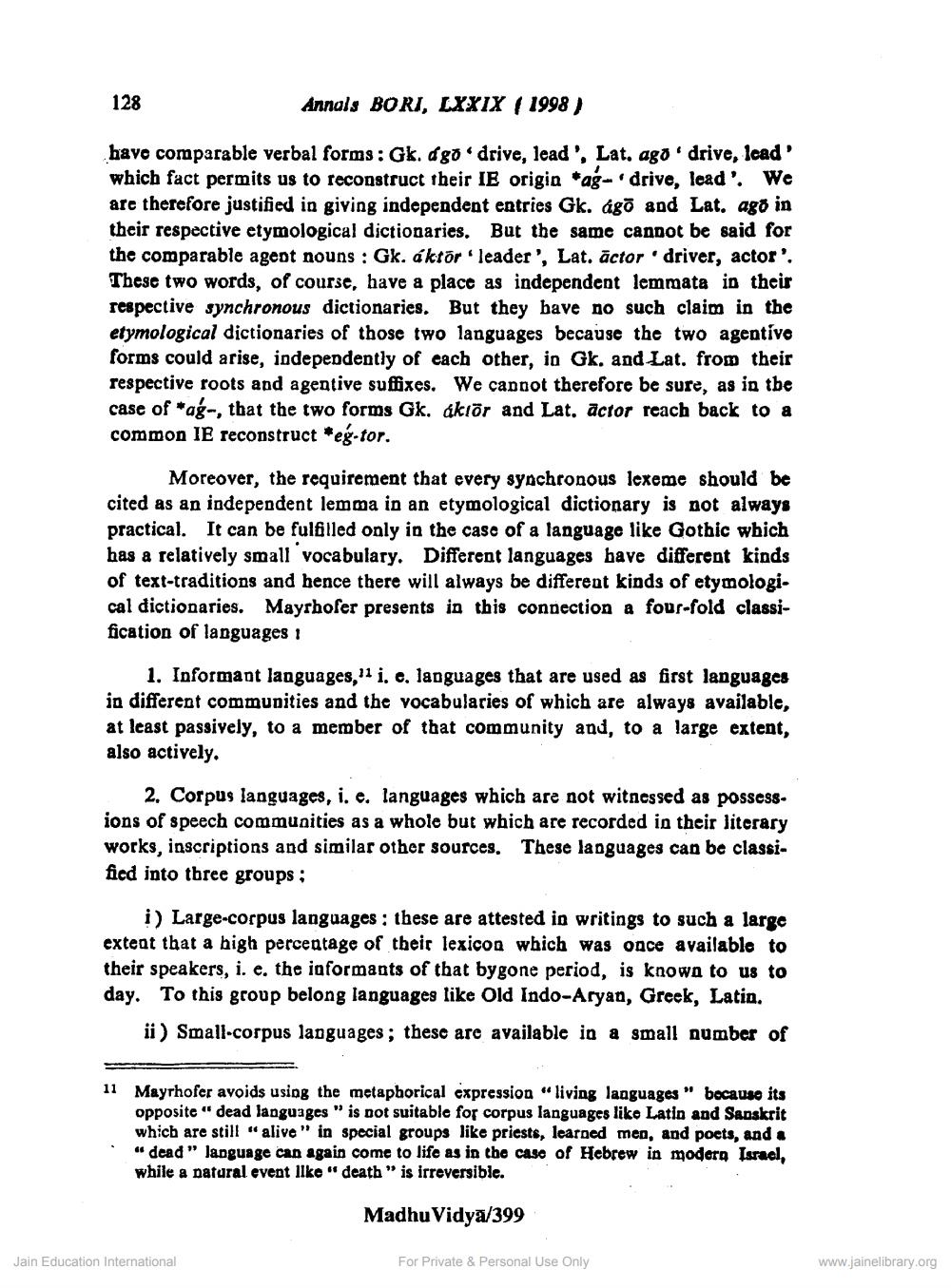________________
128
Annals BORI, LXXIX (1998)
nouns : Gk cines. But the same so and Lat. ago
have comparable verbal forms: Gk. d go drive, lead', Lat. ago ' drive, lead' which fact permits us to reconstruct their IE origin *ag-drive, lead'. We are therefore justified in giving independent entries Gk. ágo and Lat. ago in their respective etymological dictionaries. But the same cannot be said for the comparable ageot nouns: Gk. á ktor leader', Lat. āctor driver, actor'. These two words, of course, have a place as independent lemmata in their respective synchronous dictionaries. But they have no such claim in the etymological dictionaries of those two languages because the two agentive forms could arise, independently of each other, in Gk, and Lat. from their respective roots and agentive suffixes. We cannot therefore be sure, as in tbe case of *ag-, that the two forms Gk, áktor and Lat, actor reach back to a common IB reconstruct *eg-tor.
Moreover, the requirement that every synchronous lexeme should be cited as an independent lemma in an etymological dictionary is not always practical. It can be fulfilled only in the case of a language like Gothic which has a relatively small vocabulary. Different languages have different kinds of text-traditions and hence there will always be different kinds of etymologi. cal dictionaries. Mayrhofer presents in this connection a four-fold classification of languages 1
1. Informant languages,' i. e, languages that are used as first languages in different communities and the vocabularies of which are always available, at least passively, to a member of that community and, to a large extent, also actively.
2. Corpus languages, i. e. languages which are not witnessed as possessions of speech communities as a whole but which are recorded in their literary works, inscriptions and similar other sources. These languages can be classified into three groups;
i) Large-corpus languages: these are attested in writings to such a large exteat that a high percentage of their lexicon which was once available to their speakers, i. e. the informants of that bygone period, is known to us to day. To this group belong languages like Old Indo-Aryan, Greek, Latin.
ii) Small-corpus languages; these are available in a small number of
11 Mayrhofer avoids using the metaphorical expression “living laaguages" because its
opposite "dead languages" is not suitable for corpus languages like Latin and Sanskrit which are still alive" in special groups like priests, learned men, and poets, and a "dead" language can again come to life as in the case of Hebrew in modoro Israel, while a natural event like " death" is irreversible.
Madhu Vidyā/399
Jain Education International
For Private & Personal Use Only
www.jainelibrary.org




